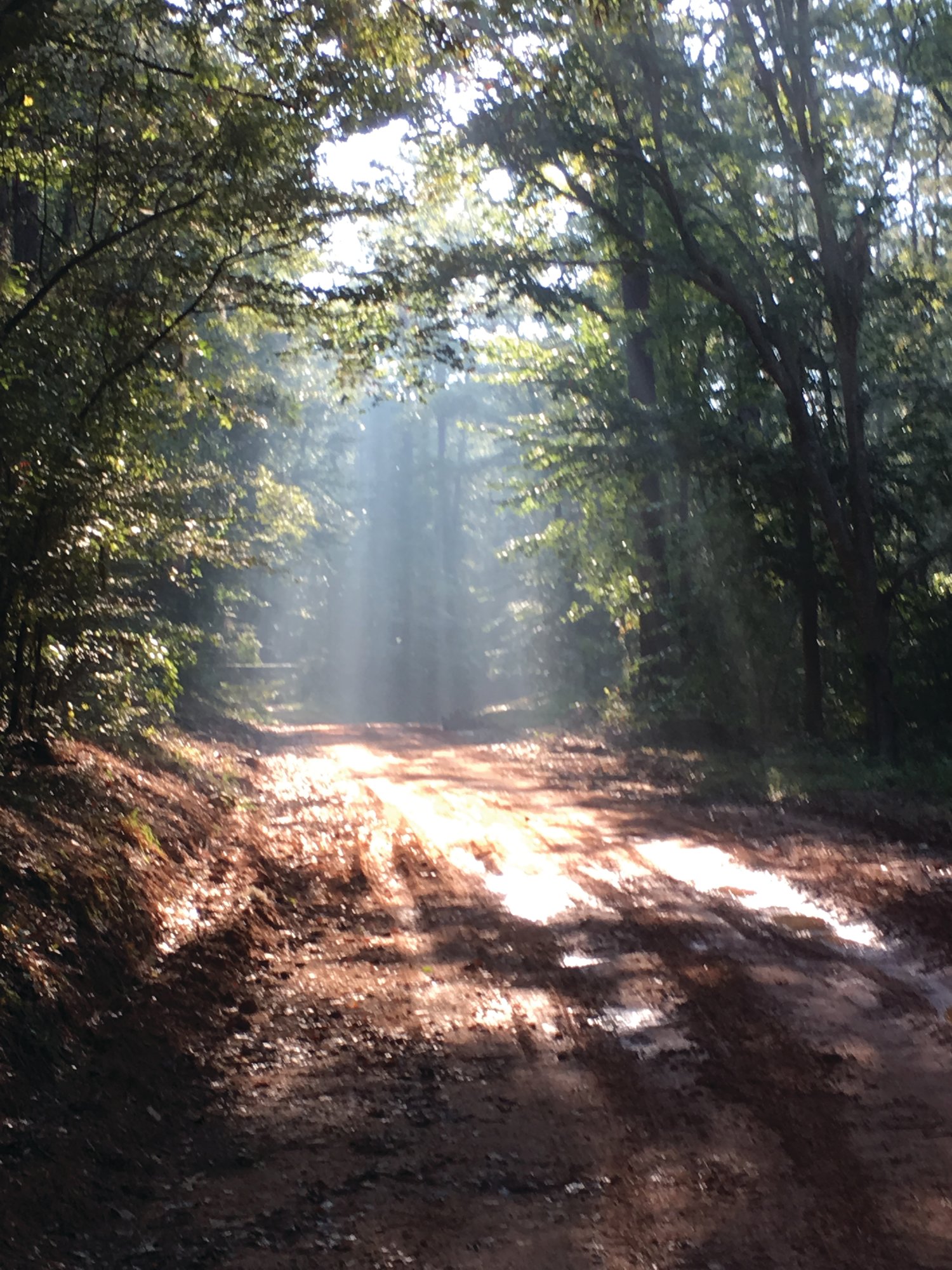Sumter outdoors columnist Dan Geddings: Dirt roads
Slow down. Put your windows down. Breathe in that fresh air. Hear the birds singing and the quail calling. You're on a dirt road. The open fields and hedgerows stretch into the hazy summer distance. Sunshine and warmth bathe the earth.
A woodland lies ahead. Cool shade envelops the road. Dapples of sunlight pierce the green canopy, and splashes of light dance across the road. The timber seems to bow over, and an arch of greenery hugs the narrow, winding lane.
Pull over up there in that wide spot and get out. Walk a little ways. Look for deer tracks punched into the soft sand. There might be smaller, lighter impressions. Coyote tracks that look like a smaller dog print or the human-like hind foot prints of a raccoon. An opossum will have a front paw print that looks much like a tiny human hand. There may be an interesting rock or a tiny, colorful piece of glass to catch your eye. You might pick up an arrowhead or shards of Indian pottery in a dirt road. The dirt itself can be quite interesting.
Most dirt roads in this part of the world have a sandy surface. There may be sections of clay or a sand/clay mixture. The weather will affect the surface of the road. Dry weather will produce dust but will offer a stable surface to drive over. Wet weather can be a problem for dirt roads. The surface may get slippery or even boggy. Heavy traffic on a wet road will create ruts that are a rough driving surface and can hold water.
There are many dirt roads throughout the county. I have driven over most of them, but I have a few favorites. In Manchester State Forest, there is Campbell's Pond Road. It is off Headquarters Road. The grade is nearly perfectly flat, and there are some long straightaways. Other dirt roads in the area are not so straight and have more up-and-down grade. After some time, I realized it was a section of the old Manchester/Wilmington railroad bed that terminated nearby at a place called Sumter Junction. The rails and cross ties were removed long ago, and a road was established on a section of its route. The glimmering waters of Campbell's Pond can be seen from the road. You can still see the deep cuts into the hillsides and the high fills in the low places. That route curves around some hillsides toward the end, but the most amazing thing to me is that it was built in the 1840s. Mules, wagons and manual labor built that railroad bed without modern equipment. One side of the road drops off into Poinsett State Park with towering pines and hardwoods that loom overhead. The uphill side is a more modern pine forest on the state lands. It leads to other dirt roads on the state forest.
There is another on Manchester that is a favorite of mine. It is a section of Middleton Road and Foxville Road. You can take Middleton Road from S.C. 261 to the end of the pavement. The dirt road is all downhill. It is mostly clay but is usually passable. There is a deep valley on one side and a high hill on the other. There is giant, magnificent timber here. The road eventually winds down to a flatter section. A left turn takes you into a hunting club. The right turn takes you down Foxville Road. Foxville was a railroad junction that is no more. The road follows the old railroad bed. The Wateree Swamp drops away on one side, and the High Hills rise above the road on the other. The roadway is mostly flat and smooth. Bad weather can create some boggy areas, especially if there is much traffic. The land on both sides is Manchester State Forest, but there are no signs. There are a couple of very deep ravines that cross the road, and there is some slope. So be careful there. The woods here are some of the most beautiful I have ever seen. To me, this is a special place.
Eventually you see sunlight ahead and cross a modern railroad. This is a good place to turn around, as the road ahead is not well maintained and is usually impassable.
Another favorite of mine is also partly on Manchester. At the end of the pavement near Mill Creek Park is a section of the old River Road. After crossing Mill Creek, there is Millford Plantation. The plantation lands are on both sides of the road. It is mostly modern forest land. Beyond Millford is Fullers Earth Creek. Stop here and look at the banks. They are made of fullers earth with a thin cover of topsoil to hold the trees and brush. It looks like shale rock but can be easily broken in your hand. The road goes on through a section of Manchester to the paved road at the entrance to Poinsett. A right turn takes you out to S.C. 261.
There are other good dirt roads throughout this county and the surrounding counties. Explore them when you can.
Email Dan Geddings at cdgeddings@gmail.com.
More Articles to Read

